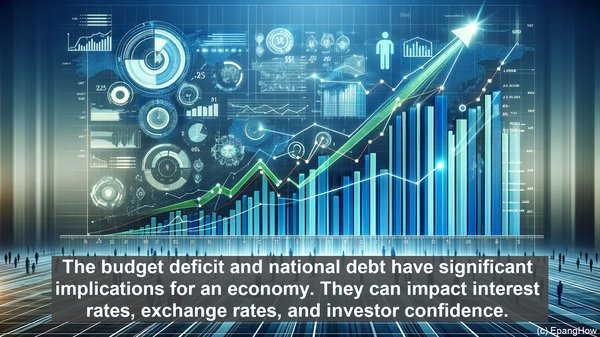Introduction: The Intricate World of Government Finances
Hello, everyone! Welcome to our channel, where we unravel complex economic concepts. Today, we’re delving into the realm of government finances, specifically the budget deficit and national debt. While these terms are often used interchangeably, they have distinct meanings and implications. So, let’s dive in!

Defining the Budget Deficit: When Expenses Exceed Revenue
The budget deficit refers to a situation where a government’s total expenses surpass its total revenue during a specific period, usually a year. In simpler terms, it’s when the government spends more money than it earns. This deficit arises due to various factors, such as increased spending on public services, infrastructure, or social welfare programs. To finance this deficit, the government may resort to borrowing, issuing bonds, or printing more money.
The National Debt: Accumulation of Past Deficits
Now, let’s move on to the national debt. It’s the total amount of money that a government owes to its creditors, both domestic and foreign. This debt is the cumulative result of past budget deficits, as well as interest accrued on those deficits. In other words, it’s the outstanding balance of the government’s borrowing over time. The national debt is typically measured as a percentage of a country’s GDP, providing insights into its economic health and sustainability.

Interplay between the Budget Deficit and National Debt
While the budget deficit and national debt are distinct concepts, they are interconnected. A budget deficit leads to an increase in the national debt, as the government borrows to cover the shortfall. Conversely, a budget surplus, where revenue exceeds expenses, can help reduce the national debt. It’s important to note that a high national debt can have long-term consequences, such as increased interest payments, potential inflationary pressures, and reduced fiscal flexibility.
Implications and Policy Considerations
The budget deficit and national debt have significant implications for an economy. They can impact interest rates, exchange rates, and investor confidence. Governments often employ various strategies to manage these factors, such as implementing fiscal austerity measures, increasing taxes, or stimulating economic growth to boost revenue. Balancing the need for public spending with long-term fiscal sustainability is a constant challenge for policymakers.
